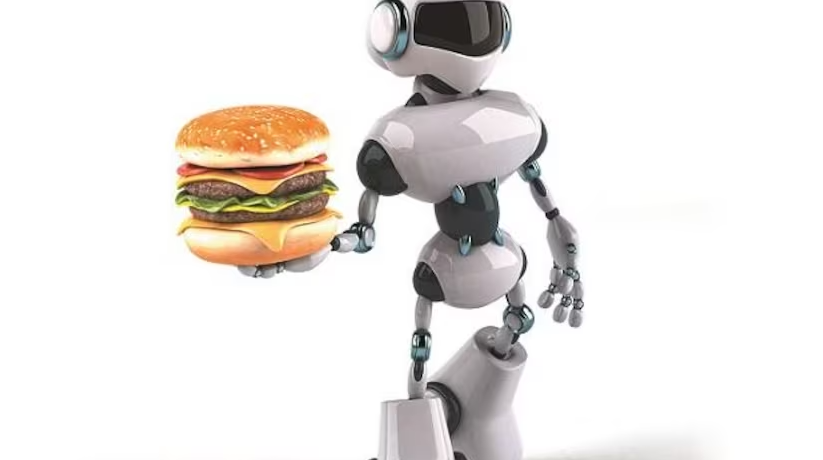When we think about food, our default setting is to instantly think about restaurants, fine dining, or maybe crops. Most of us might never think of technology instantly. Blame it on the way food is generally endorsed or the way we picture the process of cultivating food.
To make it worse, food when linked with technology is endorsed as processed food that has a longer shelf life but has nothing to do with a healthy lifestyle. If you also think the same, you are not the only one.
Over the years, tech has changed the world and it comes as no surprise that tech has significantly improved the food industry as well. From the production of food to the involvement of technology in the field of food preservation and preparation we have seen the food industry improving significantly. Now, robots are used for speeding up the food production data is gathered to ensure that food production capacity can be increased and the food supply is not interrupted.
Even in home gardening, if you use technology the right way, you can instantly improve the taste, quality, and production of the food. Moreover, food production is no longer dependent on the capacity of the soil but rather its treatment.
The best thing about information technology is that there is no gatekeeping, so the sources remain open for all. With the use of smart devices and a good internet like Suddenlink Internet, even a beginner can easily become self-sufficient.
If you are curious about the contribution of tech in the food industry and ways to unleash the power of technology, keep reading.
5 ways AI Is Improving the Food Industry
Risk Management
For the longest, food production and cultivation were seen as a risky business. You invest heavily in seeds and fertilizers but the market trends, economic issues, and maybe consumption of the crop decline with time leading to serious repercussions.
For instance, during the USSR, Cuba was seen as a heaven for sugar. It was responsible for supplying half of the world with sugar. As more farmers came into play, the amount of sugar produced by the country increased by tenfold but the requirement dropped over time leading to a majority going bankrupt. It eventually created a surplus in the system leading to a serious impact on the economy as well.
Crop Optimization
In current times, the biggest issue that is leading the majority of farmers into bankruptcy is the disaster or emergency handling of crops. For the longest time, farmers were blindsided by the recent research in the food industry.
Most people were either using older trends or older machinery. To make matters worse, a lot of farmers were not familiar with ideal soil conditions, the cycle of pesticides, or the wearing ratio required for the crop. What’s more, several people using these techniques were highly dependent on guesswork on older methods of prediction. With the use of AI, now soil is tested before the selection of the crop.
Moreover, farmers are recommended to use hybrid seeds with exact ratios of water and fertilizer to improve the crop production ratio.
Crop Monitoring
Pests and weeds are seen as the major enemy of quality crop production. While a majority of the crop cultivation companies and big farmers hire and utilize a lot of manpower to monitor the plants for pest attacks, require spray ration, weed removal, and the condition of the plants, small land farmers who cannot afford to spend a lot of money on hiring the manpower were facing serious issues.
Now, with the help of AI, small farmers can use technology i.e. drones to monitor crops for pest attacks, spray, weed removal, and plant condition. This will eventually help big farmers to cut the operational cost helping them to earn more and become profitable.
In the long run, crop monitoring through AI will help the farmers to predict and prevent a pest attack long before it will become evident helping with the profitability factors.
Crop Preservation
Crop prevention has long been an issue. Countries that produce food on a large scale do not know how to deal with the leftover crops and save them from pests and fungi. This has led to serious disasters in the past. In some cases, it eventually causes famine. Countries that rely on one specific crop or have a staple food eventually have to face food shortages.
With the use of AI, the condition of the food can be monitored closely. This helps with improving the life span and shelf life of food so food can be used in the future as well.
Seasonal Forecasting
AI is known to gather data from everywhere; this data does not just allow AI to read the trends but also predict the trends with ultimate precision. Since the food industry is dependent heavily on using the weather forecasting system, precision with AI seasonal forecasting can help reduce the overall crop risk.
A simple example of this trend is the seasonal change happening due to climate change. As the weather is becoming more intense, summers are getting harsh and longer. On the contrary, weather patterns are also changing. Countries that were once famous for summer fruits are now seeing a lag due to heavy rain, changes in weather patterns, and much more. With the use of AI, weather and temperature trends can be predicted so the crops can be selected based on the weather trends.
Bottom Line
To sum it all up, AI is improving the food industry. While food experts and climate experts are busy telling us all about how we will run out of food, tech inductee is busy saving us and the above-mentioned factors make it evident for all to see.

